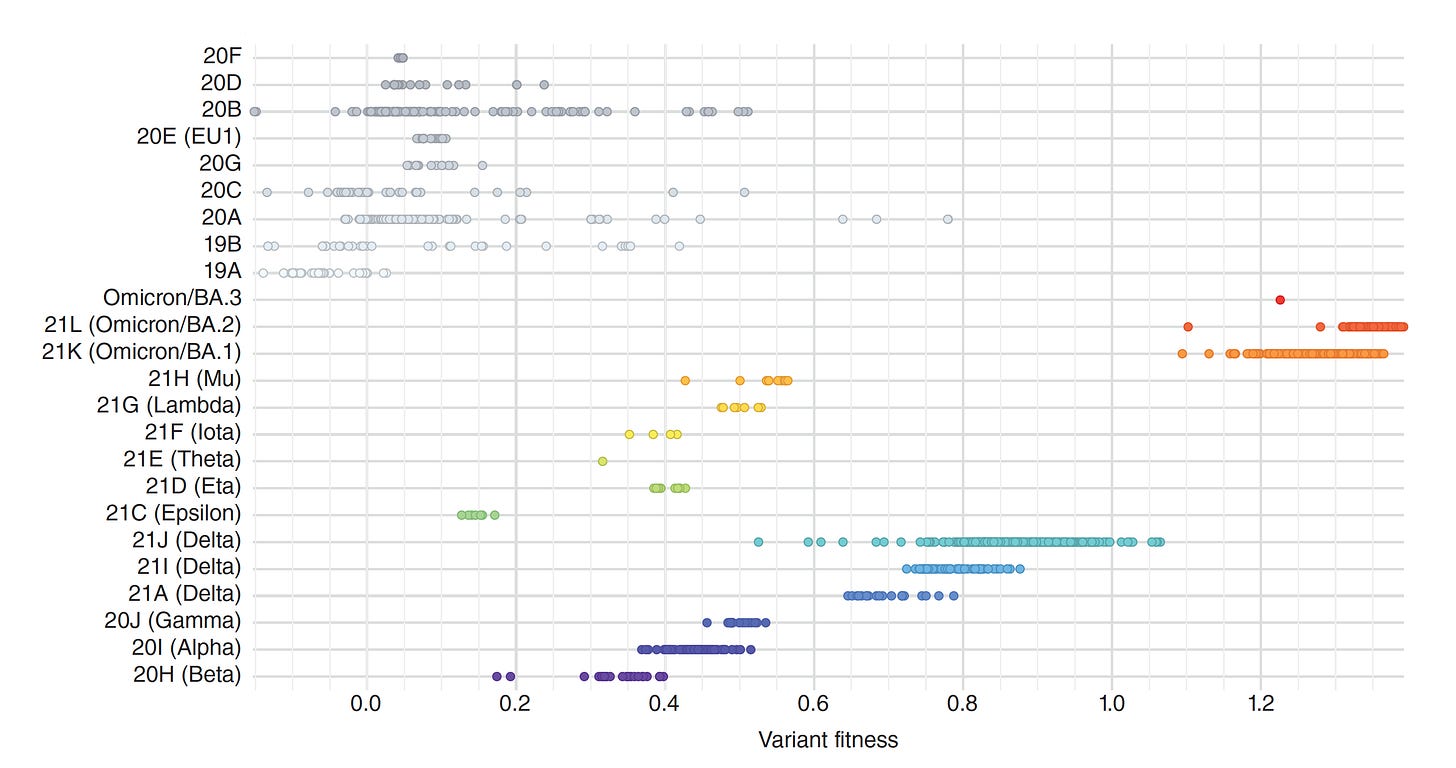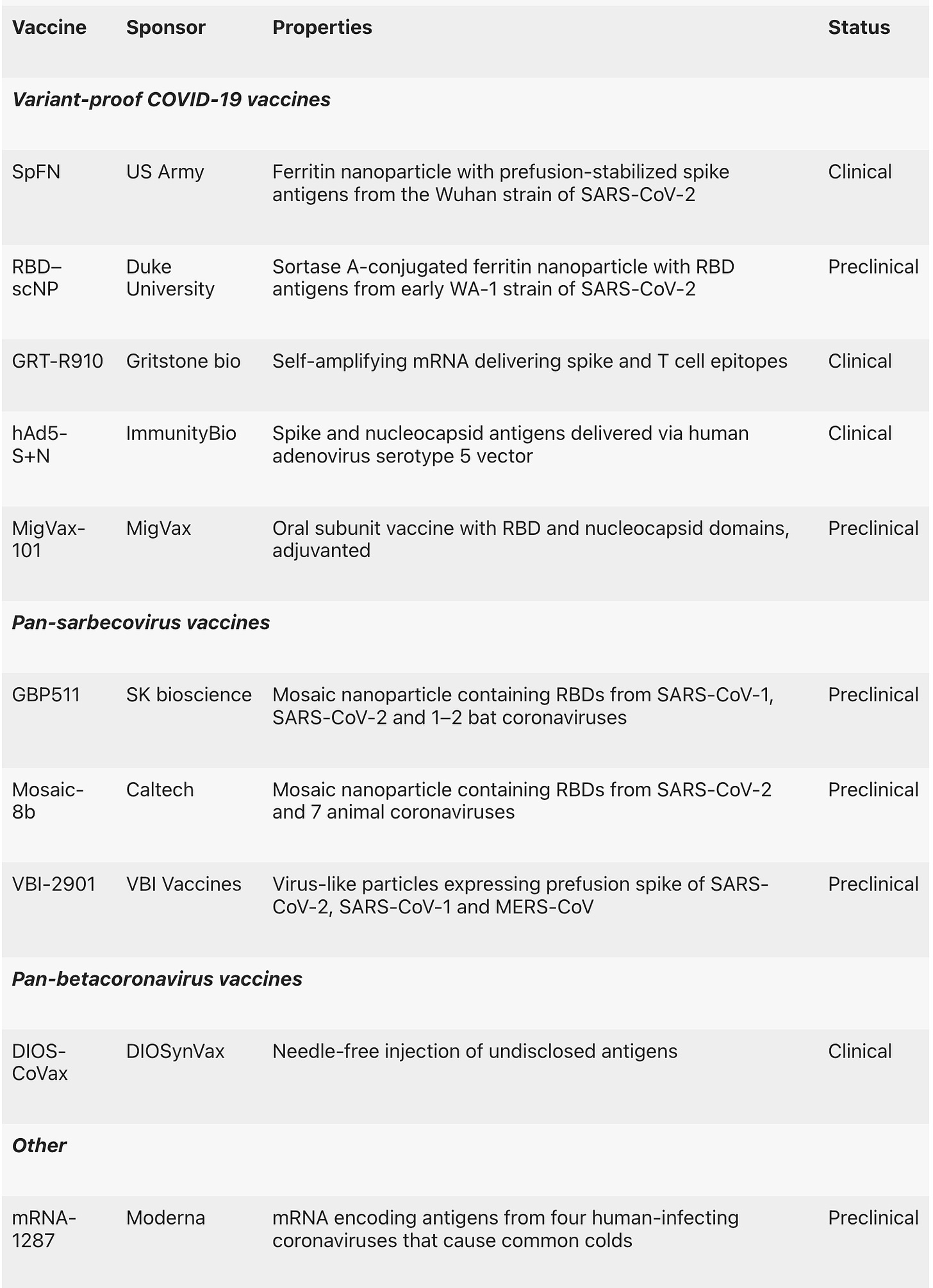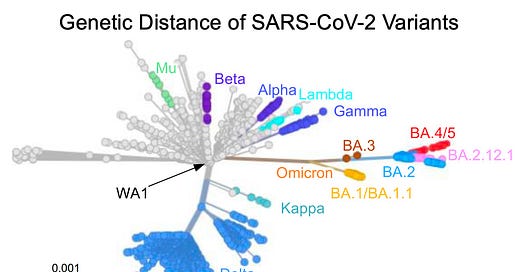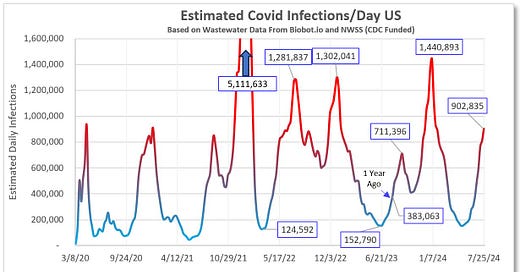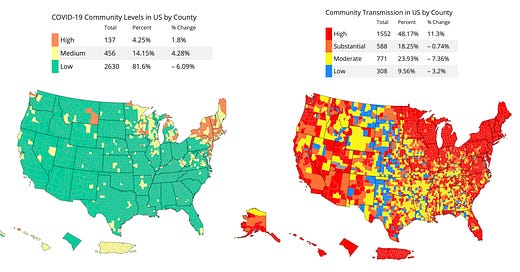
With the emergence of Omicron (BA.1) in late 2021, we saw a hyper-transmissible variant unlike any previous ones with an estimated 3-fold increase in its effective reproduction number compared with Delta. That evolution has proceeded full steam with BA.2 that has a 30% increased transmissibility, and now, in the United States, about to become dominant, BA.2.12.1, which has yet another 25% increase in transmissibility. No, it’s not measles, which carries a Ro of 18, but we’re steadily and sequentially climbing a ladder of increased infectiousness of the virus, as schematically shown below. It’s certainly not as evolutionary biologists would portray this progression, but it’s a simplified, pragmatic perspective.
This reflects the increased fitness of SARS-CoV-2, a complex topic, which was reviewed recently by Telenti and colleagues and summarized in this graph, prior to the emergence of more BA.2 subvariants (such as BA.2.12.2 or BA.4, BA.5)
As I wrote in the Los Angeles Times today, it is highly unlikely that we’ll ever repeat the monstrous Omicron wave in the United States, but we are now facing the rise of the BA.2.12.1 variant (37% of new cases as of April 30 by CDC) and have learned quite a bit about it in recent days. It has a substantial transmissibility advantage beyond BA.2, which was already 30% more transmissible than BA.1, and reduced cross-immunity to BA.1 such that the people who had Omicron BA.1 infections (estimated to be at least 40% of Americans) may be susceptible to reinfections by this variant. Indeed, the Omicron-specific vaccines that use the BA.1 spike structure, which are in clinical trials and due to read out in the next couple of months, may not fulfill their promise with a variant that carries such immune escape properties. In parallel to the BA.2.12.1 variant in the US, the BA.4 and BA.5 variants (which share the same spike protein sequence) have become dominant in South Africa (where a 4th wave has taken root). Their increase in transmissibility does not appear to be as much as BA2.12.1, but their immune escape, relative lack of cross-reactive immunity to BA.1 and some increase resistance to monoclonal antibodies is similar to BA2.12.1. Unlike BA2.12.1, BA.4 and BA.5 have not shown enhanced entry to cells. These features along with and many others are summarized into following Table. Of concern is that we have already seen a drop-off in protection from hospitalization even with 3-shots from prior vaccine effectiveness (pre-Omicron) well above 90%. A recent report suggested with BA.1 the durability of that protection may be shorter. We have no data yet for vaccine effectiveness vs BA2.12.1 or BA.4/BA.5.
Currently, the indices to track the pandemic in the United States are compromised and wastewater surveillance, where it is available, and hospitalizations, are the best metrics we have to work with. While there has been a major spike in cases in Puerto Rico, exceeding 100 per 100,000 residents, and some increase in hospitalizations, even in New York State, where BA.2.12.1 is already dominant, there has not been a rise in hospitalizations that has come anywhere close to what was seen in the Omicron BA.1 wave, which is reassuring.
We will certainly get through the BA.2.12.1 challenge, but what’s to come? To debunk the myth, it is not true that variants will get less virulent over time—their evolution is unpredictable, as we have already seen. The problem that lies ahead is the many paths by which yet another noxious variant can show up. To anticipate this next Greek letter variant, we need broad neutralizing antibodies, vaccines that are protective across the beta-coronavirus or sarbecovirus family, and multiple effective medications beyond Paxlovid.
The priority and support for far better vaccines that would be variant-proof has not taken hold. Here is the current list with only a few in development that have reached clinical trials; there is nothing like the Operation Warp Speed accelerated, dedicated initiative that helped make the initial vaccines a major success.
This is not the time to let up, cut resources. It’s vital to anticipate the worst case scenario instead of just hoping it won’t occur. We’d all be relieved if everything calmed down following the wave of different BA. variants that are cropping up around the world now. Let’s not pretend this is over or we’re at some illusory “endemic” steady state. Beyond preempting the human toll, any further investment in preparedness would be worthwhile when one considers :“The pandemic has also been responsible for a 6.5% drop in gross domestic product globally in 2020 and is projected to cause a total economic loss worldwide of US$ 28 trillion by 2025.”
We have the tools and ingenuity to get ahead of this virus rather than consistently trail behind it.




